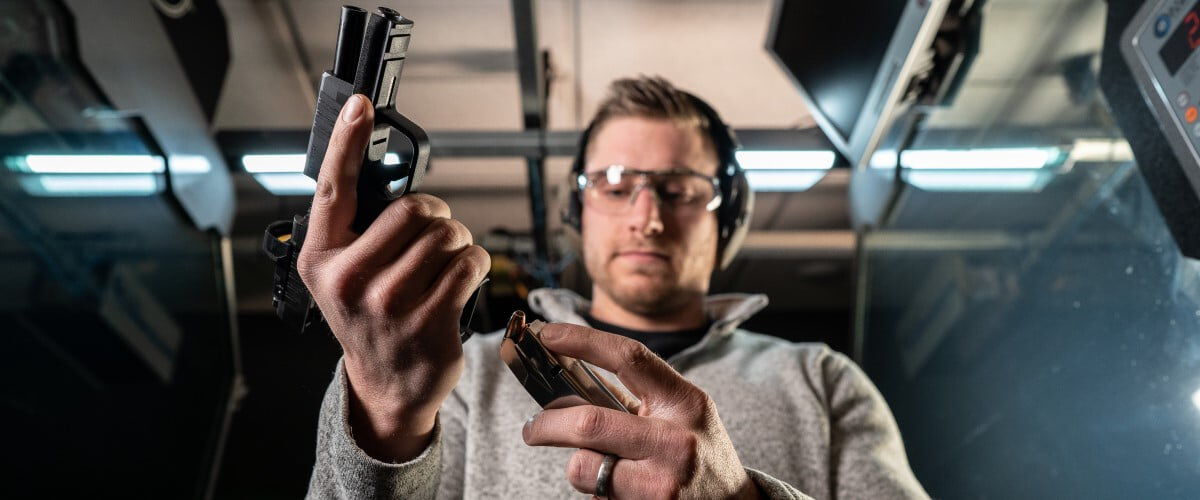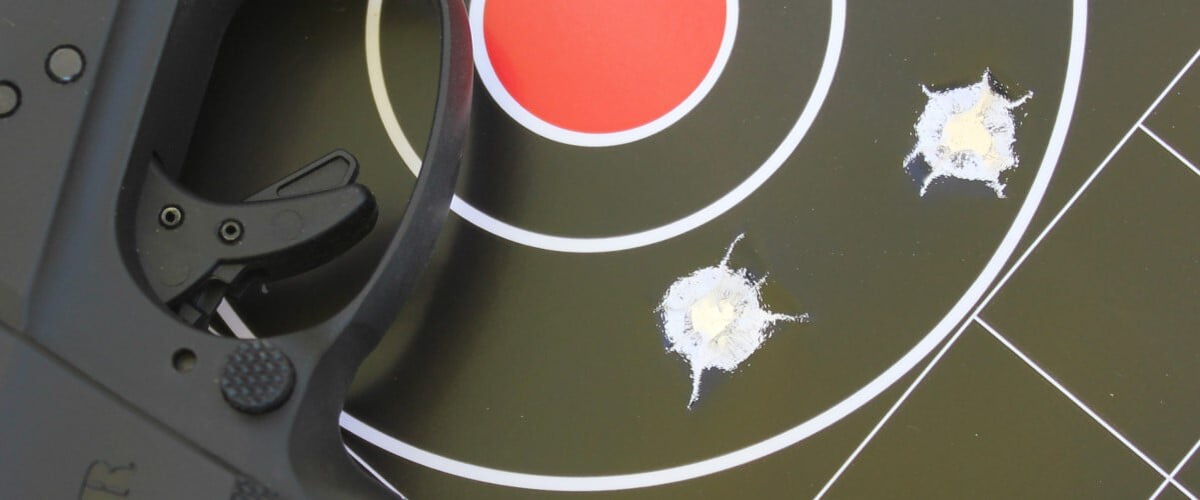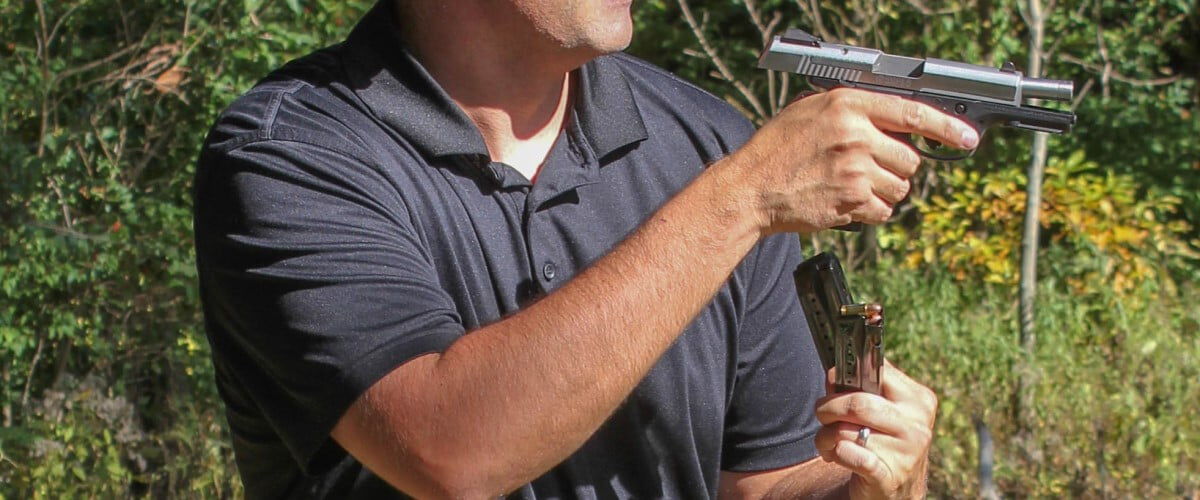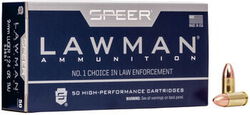
If you’ve attended armed self-defense courses, you’ve probably run several pistol drills. While some I’ve run have been good, others have been strange, including a shooting scavenger hunt. Although that drill was safe and broke up the monotony of the day, I would argue it wasn’t near as beneficial as the instructor argued. Shooting is a complex mechanical skill, and like other mechanical skills it requires having a grasp on the most basic elements of the operation. When you learned to dribble a basketball, you didn’t start by dribbling between the legs and behind the back. Those skills might be useful, but they require a grasp of fundamental skills.
There are no scavenger hunt drills listed here. No rolling on the ground, no shooting under cars, and nothing inspired by Jason Bourne or John Wick. These drills are the firearms equivalent of dribbling a basketball and shooting a layup, but like those skills, they build the foundation for advancement that leads to better performance. Whether you want to shoot USPSA or IDPA pistol competitions, or simply become more skilled with a handgun, these three drills will help you.
The Double-Tap
How It Works: This is likely the first drill you learned after the initial slow-fire, single-round drill that serves as the basis for all pistol skills. As the name implies, you are firing two shots in rapid succession into the same target. Initially, students will aim at the target and then fire the two shots, but as they advance, they will begin from a low-ready position and, ultimately, they will draw and fire.
Why It Works: Some shooters consider the double-tap drill too simple, but how quickly and accurately they can fire two shots? Can they maintain sight picture during recoil? Maintain trigger control and only allow enough forward trigger travel to reset for the next shot? The answer is that most shooters I know—even experienced shooters—don’t do both those things really well. But proper double-tap training requires you to acquire your sight picture, manage recoil and re-engage the target. Those are valuable skills for competition shooters, but they’re also very important in self-defense situations.

Initially the shooter will run this drill with the weapon aimed or at low-ready, but ultimately a double-tap should involve drawing from the holster and firing both shots. Drawing from a holster is a separate and equally important skill that can be practiced here, and it should be done slowly at first. Keep the non-firing hand well away from the muzzle of the gun and finger off the trigger until the muzzle is aimed at the target and in a safe direction.
Variation: The Mozambique Drill is the most common variant of the double-tap. Using a torso target, fire a double-tap into the chest area of the target and then a third shot into the head.
Target Transition
How It Works: This drill requires the shooter to transition from one target to the next, which is elemental in both competition and self-defense shooting. Invariably, the drill begins with two targets and requires shooters to engage the first target, and then switch to the second as quickly as possible. As students advance they can add more targets or movement, but students must always keep the muzzle pointed downrange and objects should be cleared if movement is added.
Why It Works: Target transitions work on several of the fundamental skills learned in double-tap drills, primarily firing two fast and accurate shots. Sight reacquisition is reinforced since students must fire at the first target, transition to the second, and fire again. They’ll also have to learn to reposition the muzzle of the firearm efficiently, and doing so requires the upper and lower halves of the body to remain fixed behind the gun while rotation occurs at the hips.
Students who are comfortable transitioning between targets understand sight picture, recoil management, and trigger control. You can also add movement to this drill as well by firing a double-tap on the first target, repositioning in front of the second target, and firing again. Movement is critical both for competition and real-life self-defense situations. In many cases the best way to protect yourself is to find protective cover, and reaching that cover means you’ll have to be able to move while engaging an attacker. Remember to take shoulder-length steps and try not to cross your feet as you move to prevent getting tangled.

Variation: When a student is comfortable shooting moving target transition drills and starting with the gun holstered, they have mastered many of the basic skills of shooting (so don’t be frustrated is it takes you some time to be able to run these drills efficiently). Now it’s time to add a reload into the mix. To do so, load two rounds into your magazine or the cylinder of your revolver, fire a double-tap, reload and move to the second position. Shooters who are comfortable with the stationary reload can then begin reloading as they move.
Carnival
How It Works: This simple, effective drill requires that balloons of different colors are attached to a target frame and then shot in rapid succession. Admittedly, I was initially skeptical when an instructor showed me this drill, and it does leave a bit of a mess that you’ll need to clean up afterwards, but Carnival is a great skill builder. To begin, blow up multi-colored party balloons to full size and, using thumb tacks or a staple gun, attach them to a wooden target frame. Usually a dozen balloons of four or five colors will suffice. From the aimed, low-ready, or holstered starting position (depending on your comfort and skill level), wait for your partner to yell a color, and then shoot only the balloons of that color.
Why It Works: Carnival harkens back to the “aim small miss small” principle touted by target shooters. You need to shoot quickly, you need your brain to process something besides hitting a single target, and you’ll need to hit the target color you want without breaking balloons of different colors.
As simplistic as this drill might sound, the bit about teaching your brain to process information outside your suite of shooting skills while firing at the target is the key. Your mind must perform a task, albeit a simple one, by identifying balloon colors. I was amazed at how quickly this particular drill made me a better shooter because it required me to transition sight picture again and again, account for movement (the balloons move with any breeze), and shoot very accurately. I was also amazed at how poorly I did initially. This drill also forces students to stop focusing on exactly where the bullet impacts, which is common when shooting paper or steel. Did the balloon break? Then you hit your target and did your job.
Variation: What makes balloons great targets (aside from being cheap, brightly-colored and reactive) is that you can adjust size very easily. Once you can hit a balloon that’s full-size, test yourself on balloons that are only half-size.

LAWMAN
Train with ammunition that not only offers superb consistency but also feel and point of aim that are as close as possible to your self-defense loads. All Speer Lawman options are loaded with our exclusive TMJ bullet.
Buy Now